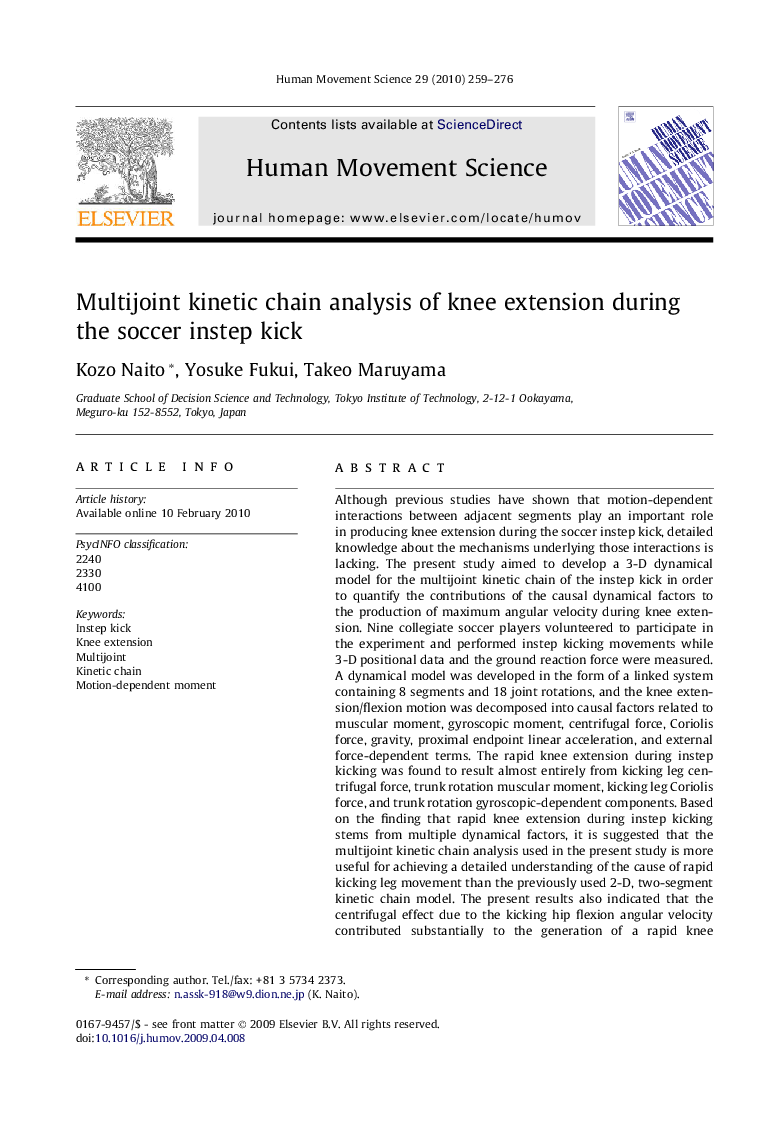| Article ID | Journal | Published Year | Pages | File Type |
|---|---|---|---|---|
| 928730 | Human Movement Science | 2010 | 18 Pages |
Although previous studies have shown that motion-dependent interactions between adjacent segments play an important role in producing knee extension during the soccer instep kick, detailed knowledge about the mechanisms underlying those interactions is lacking. The present study aimed to develop a 3-D dynamical model for the multijoint kinetic chain of the instep kick in order to quantify the contributions of the causal dynamical factors to the production of maximum angular velocity during knee extension. Nine collegiate soccer players volunteered to participate in the experiment and performed instep kicking movements while 3-D positional data and the ground reaction force were measured. A dynamical model was developed in the form of a linked system containing 8 segments and 18 joint rotations, and the knee extension/flexion motion was decomposed into causal factors related to muscular moment, gyroscopic moment, centrifugal force, Coriolis force, gravity, proximal endpoint linear acceleration, and external force-dependent terms. The rapid knee extension during instep kicking was found to result almost entirely from kicking leg centrifugal force, trunk rotation muscular moment, kicking leg Coriolis force, and trunk rotation gyroscopic-dependent components. Based on the finding that rapid knee extension during instep kicking stems from multiple dynamical factors, it is suggested that the multijoint kinetic chain analysis used in the present study is more useful for achieving a detailed understanding of the cause of rapid kicking leg movement than the previously used 2-D, two-segment kinetic chain model. The present results also indicated that the centrifugal effect due to the kicking hip flexion angular velocity contributed substantially to the generation of a rapid knee extension, suggesting that the adjustment between the kicking hip flexion angular velocity and the leg configuration (knee flexion angle) is more important for effective instep kicking than other joint kinematics.
